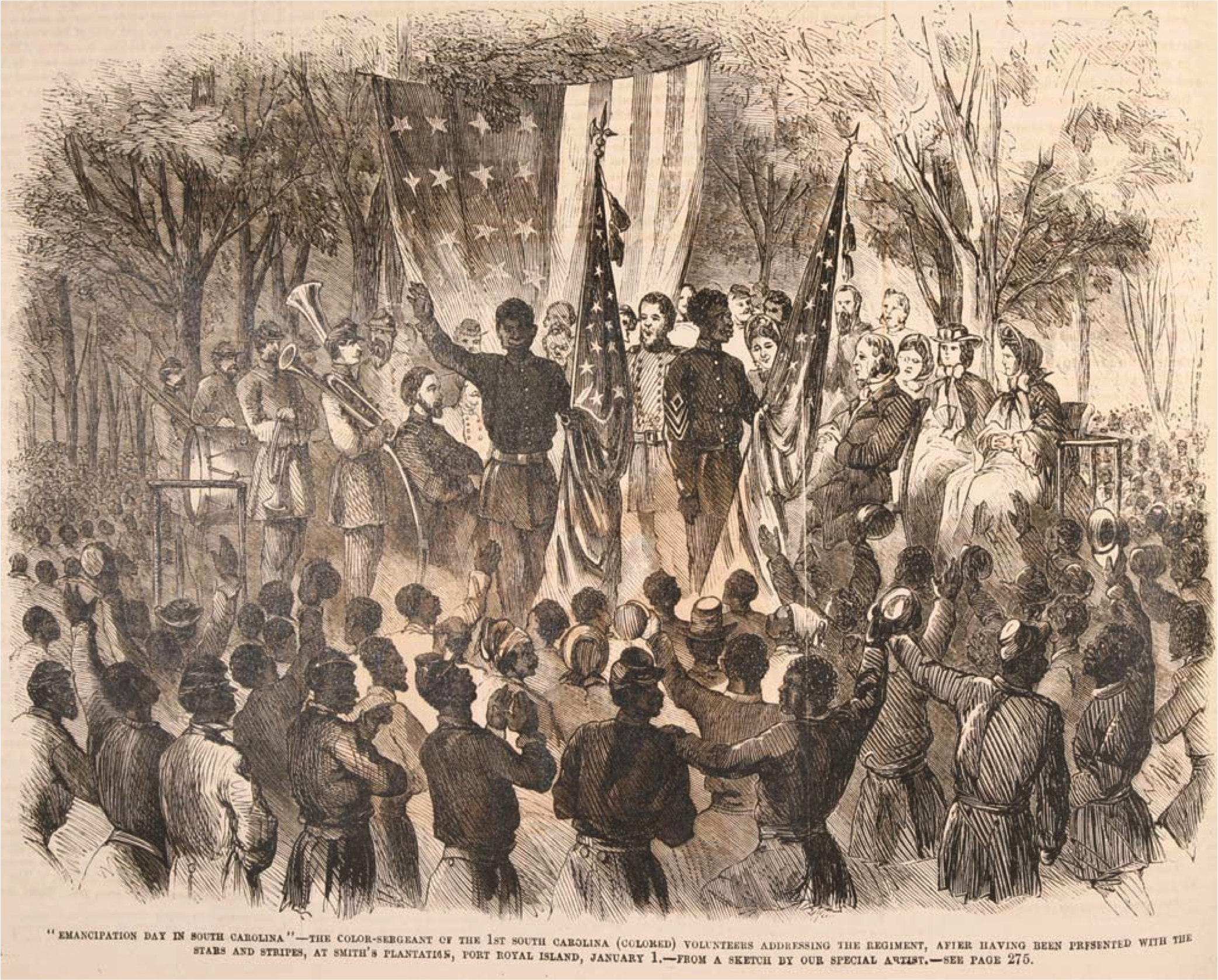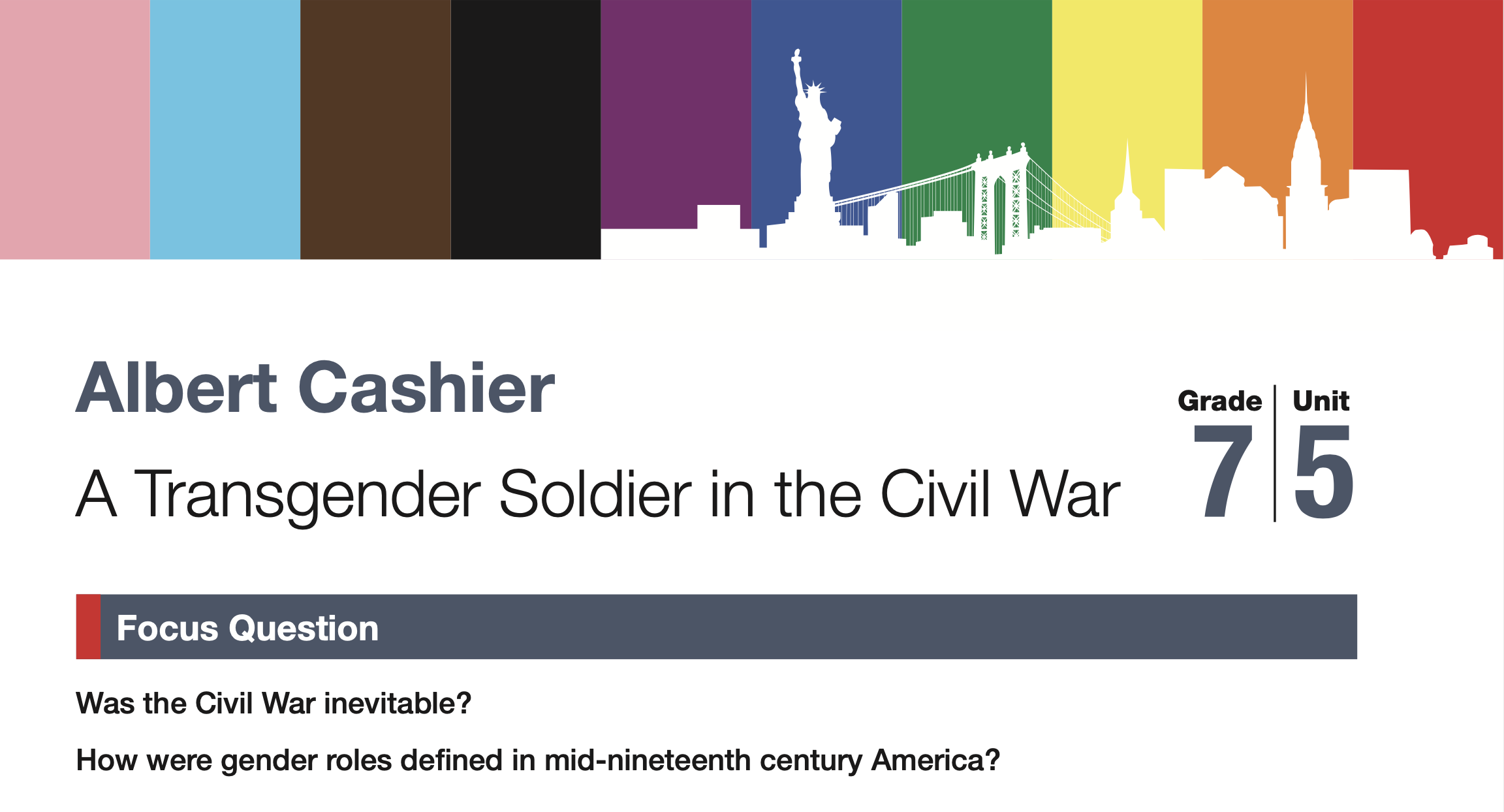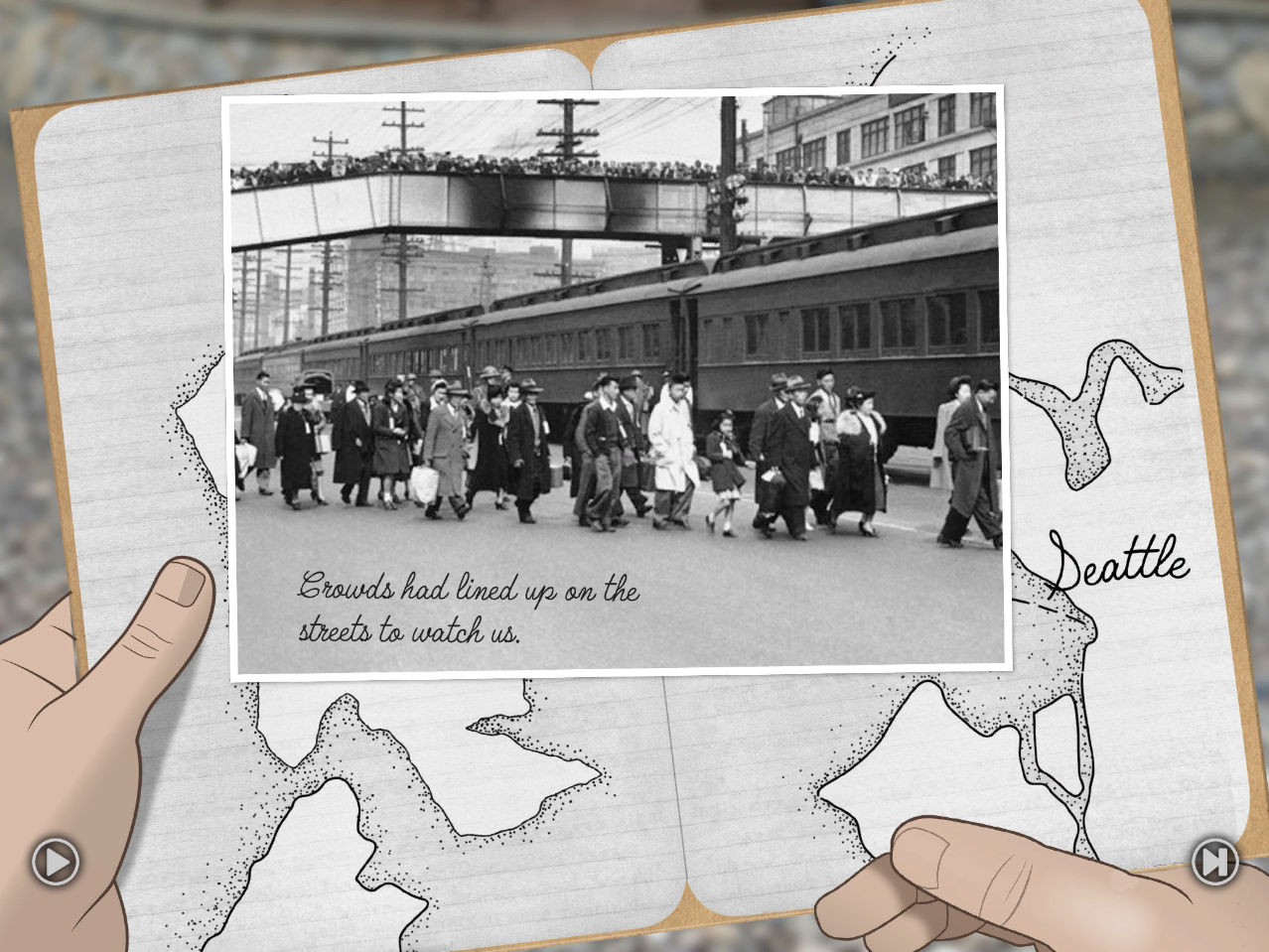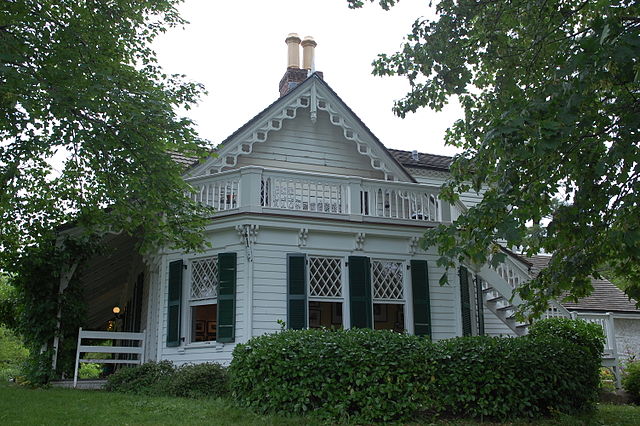September 2020 ASHP/CML Newsletter
July 2021 Virtual Institute - Visual Culture of the American Civil War and Its Aftermath

The American Social History Project/Center for Media and Learning at The Graduate Center, CUNY, will host a National Endowment for the Humanities institute in Summer 2021 for 25 college and university teachers to study the visual culture of the American Civil War and its aftermath. Postponed this year due to Covid-19, this fifth iteration of the institute will focus on the era’s array of visual media—including the fine arts, ephemera, photography, cartoons, maps, and monuments—to examine how information and opinion about the war and its impact were recorded and disseminated, and the ways visual media expressed and shaped views before, during, and after the conflict.
Due to continuing restrictions regarding face-to-face meetings, the institute will be entirely online, giving participants the opportunity to view lectures and interact with noted historians, art historians, and archivists. In addition, they will participate in new “behind the scenes” virtual sessions with curators and staff in major museums and archives. A core team of three institute faculty will introduce participants to the rich body of new scholarship that addresses or incorporates Civil War and postwar visual culture, meet them via individual remote conferences to guide their research, and help them to use visual evidence to enhance their scholarship and teaching. The 2021 institute faculty includes: Jermaine Archer, Amanda Bellows, Louise Bernard, Joshua Brown, Sarah Burns, Gregory Downs, Matthew Fox-Amato, Amanda Frisken, Dominique Jean-Louis, Barbara Krauthamer, Turkiya Lowe, Maurie McInnis, Susan Schulten, Scott Manning Stevens, and Dell Upton.
Information about applying as well as the institute’s program of activities will be available in November at: https://ashp.cuny.edu/nehinstitute.
Thanks to a supplementary NEH grant, many of the institute’s resources and previous activities are available online on The Visual Culture of the American Civil War website. The site features video lectures and related picture galleries, primary documents, and print and multimedia bibliographies.
Image: Engraving. "Emancipation Day in South Carolina" - the Color-Sergeant of the 1st South Carolina Colored addressing the regiment, after having been presented with the Stars and Stripes, at Smith's plantation, Port Royal, January 1. , 1863. Frank Leslie's Illustrated Newspaper, Vol. 15, No. 382 (1863 Jan. 24), p. 276.
LGBTQ+ Curriculum Project for NYC Department of Education Completed

Over the past six months, ASHP/CML worked with New York City Department of Education on a project to develop resources and lesson plans for their Hidden Voices program. Our work focused on incorporating significant LGBTQ+ people and events into the existing curriculum framework for elementary, middle, and high school classrooms. The project was initiated to help NYC students learn about and honor the innumerable people, often “hidden” from the traditional historical record, who have shaped and continue to shape our history and identity.
ASHP collaborated with teams of scholars and educators to plan, research, develop, and edit 20 lesson “profiles” on LGBTQ+ history and culture. Profiles include the 19th century Zuni Two-Sprit person We’Wha, blues performer Ma Rainey, and transgender civil rights activist Sylvia Rivera, among many others. Lessons include detailed classroom procedures, notes to teachers on best practices, worksheets and activities, and numerous primary and secondary materials relevant to each topic.
The lessons will serve as examples to accompany a revised Hidden Voices resource guide. The guide is aligned to the New York City’s “Passport to Social Studies” curriculum, helping teachers facilitate and explore inclusive learning experiences that validate the diverse perspectives and contributions of underrepresented individuals and groups. The project is in the final publishing stage and will be freely available to educators and the greater public online in the near future.
A New Mission US is Released

Prisoner in My Homeland, the sixth Mission US interactive history teaching resource is now available along with an in-depth Educator’s Guide. In this online immersive role-playing game, the player takes on the role of Henry Tanaka, a 16 year-old Japanese American from Bainbridge Island in Washington State. After the U.S. entrance into World War II, Henry’s typical American teenage life is forever changed when President Roosevelt signs Executive Order 9066, which authorized the forced removal and incarceration of approximately 120,000 Japanese Americans. Prisoner in My Homeland follows Henry as he struggles to make sense of the incarceration, tries to help his family and community, faces choices about how to adjust to life in the prison camps, and responds to the required loyalty questionnaire. Player choices throughout the game shape what ultimately happens to Henry and his family in the years after their incarceration. We are delighted that Newsweek provided a glowing review of the new mission.
During the three years of production, the Mission US team (WNET New York Public Media, Electric Funstuff, and ASHP/CML) worked in cooperation with Japanese American community and history organizations including with Densho, a Seattle-based organization and digital archive, the Bainbridge Island Japanese American Community and the Manzanar National Historic Site. Funding for Prisoner in My Homeland came from the National Park Service.
Farewell "HERB," Welcome “Social History for Every Classroom”

We decided to put an end to the quizzical looks, raised eyebrows, and general bewilderment whenever we sent teachers to “HERB,” our foremost repository of history teaching materials for grades 6-12. The site has lost its pipe-smoking eponym, but no need to worry about broken links, the old url will redirect to a new address for Social History for Every Classroom.
Coming Event on Ghost River: Decolonization Through Artistic Reinterpretation

On October 7, the Publics Lab at the Graduate Center will host a conversation with the historians and artists behind Ghost River.
Ghost River: The Fall and Rise of the Conestoga (Red Planet Books and Comics, 2019) is a graphic novel about the Paxton massacres of 1763. However, as the title suggests, the Paxton vigilantes associated with this tragedy are peripheral to this story. This volume introduces new interpreters and new forms of evidence in order to foreground Indigenous victims, survivors, and kin in ways that colonial printed records – with their focus on colonial elites – cannot do alone. Written, illustrated, and published by Native partners, Ghost River confronts challenges that accompany studies of colonial America. How can we tell difficult stories that don’t reproduce past assumptions? Can we recollect tragedy without eulogizing it? And how can acts of artistic reinterpretation reveal the fluidity of history, memory, and collective mythology? Artist Weshoyot Avlitre (Tongva), author Dr. Lee Francis IV (Pueblo of Laguna), and editor Dr. Will Fenton will discuss their collaboration, and how artistic reinterpretation of colonial records enabled the team to imagine a narrative that re-centers the Indigenous past and present in colonial America.
Co-sponsored by the American Social History Project/Center for Media and Learning. Free and open to the public. To register, go to: https://publicslab.gc.cuny.edu/events/ghost-river-decolonization-through...
Welcome Danielle!

This semester the ASHP/CML is thrilled to welcome a new graduate assistant, Danielle Bennett. A first year Ph.D. student, Danielle has interests in U.S. history and museum studies and recently completed a Master's degree at Tufts in a program that combines the two areas. At the GC she plans to continue pursuing her passion for public history and memory, especially the investigation of how queer history has been presented at historic house museums such as the Staten Island's Alice Austen House (pictured). At ASHP/CML, Danielle will help to develop new podcasts and other initiatives.
REMINDER: “Epidemics in U.S. History” and “Historicizing Black Resistance in the U.S.” Resource Pages

We would like to remind everyone of the two online resource pages our team developed over the spring and summer months:
Epidemics in U.S. History
The rapid spread of the COVID-19 virus in the United States and around the world leaves many of us seeking ways to place the pandemic in historical context. ASHP/CML has compiled a list of resources and discussion questions to assist students, teachers, and the general public in understanding past epidemics and connect this knowledge to the present situation.
Historicizing Black Resistance in the U.S.
ASHP/CML has compiled resources for those who want to better understand the history of both black oppression and black resistance that make up the U.S. story. This selective compilation highlights materials drawn from our own collections, plus links to other freely accessible documents, collections, lesson plans, and items suitable for students, teachers, researchers, public historians, and the interested public.
Please share these sites widely, and check back to each as we plan to update and expand the collections. And stay tuned for another resource page, focused on Elections in U.S. history, that will be available next month.
We are interested in learning more about ASHP/CML’s supporters and the programs and resources that engage you. Our mission is to make social history resources available to students and teachers, so if you can’t find something please let us know. Share, like, and tweet our resources with others; and download, rate, and review the podcasts for other potential listeners. Please give us feedback on your use of ASHP resources by completing this brief survey. Your responses will help us to better serve you.
